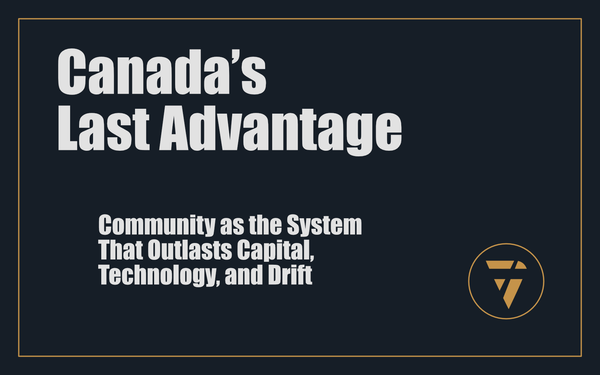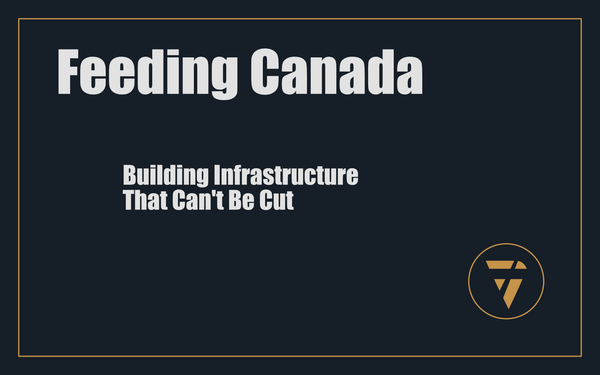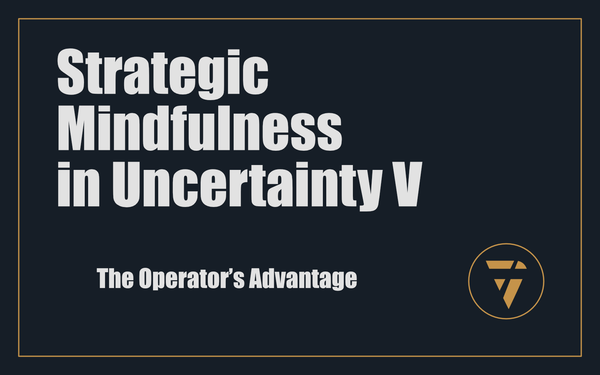Scale Doesn’t Forgive Confusion

It Amplifies
Confusion is cute when you’re small.
At $100K, you can afford ambiguity. At $500K, you can still recover from a missed signal, a vague role, a soft deadline. You’ve got room to wobble. You can survive with a few blind spots. You can fix things in real-time.
But scale doesn’t forgive confusion.
It multiplies it.
Every layer of growth—revenue, headcount, product lines, geographies—acts as a force multiplier. If your systems are clear, they compound performance. But if your systems are vague, they compound collapse.
Scale is an accelerant. It doesn’t fix what’s broken. It exposes it. And once you cross the threshold—$1M, $3M, $10M—your ability to brute-force clarity vanishes. The speed, weight, and spread of your operation become too wide for patchwork leadership.
If you’re vague at $1M, you’ll be bankrupt at $10M.
And here’s the truth most founders can’t stomach:
The collapse at scale won’t come from your market, your competitors, or your team.
It will come from the parts of your system you refused to make unambiguous.
The roles you kept loose.
The decisions you let drift.
The metrics you never codified.
The standards you never enforced.
The culture you “hoped” would hold.
Hope is not insulation. Clarity is.
1. Vague Roles Create Infinite Waste
Early-stage teams survive on flexibility.
“I’ll wear multiple hats.”
“We’re all just figuring it out.”
“Let’s keep it fluid.”
Fine at $200K. Fatal at $5M.
When two people own the same outcome, no one owns it.
When a role is defined by effort, not outcome, confusion spreads.
When titles are vague, accountability disappears.
Structural Fix:
Every role gets one scoreboard. One dashboard. One set of numbers.
If a role doesn’t map directly to a metric, delete or redefine it.
If a person can’t state their outcome in one sentence, they’re not clear—they’re dangerous.
2. Loose Metrics = Unscaled Lies
If you can't measure it, you can't scale it.
But worse—if you're measuring the wrong thing, you’re scaling the wrong result.
Growth masks bad data.
Revenue hides inefficiency.
Customer happiness hides churn risk.
Structural Fix:
Install three-tier measurement:
- Daily: Immediate motion (tasks, actions, fulfilment)
- Weekly: Operational truth (inputs, conversion, velocity)
- Monthly: Strategic consequence (retention, margin, CAC/LTV)
Clarity comes from compression. No more 30-tab spreadsheets. No more “checking in.” Just real-time data tied to structural outcomes.
3. Decision Ambiguity = Death by Drift
Early on, you can get away with collaborative decision-making. You’ll talk it out. Workshop it. Come back to it later.
At scale, ambiguity kills speed.
Speed kills the laggards.
If you’re not fast, you’re dead.
Structural Fix:
Every decision has:
- One owner
- One deadline
- One consequence for delay
No more roundtables. No more collective responsibility. If everyone owns the decision, no one does. Install single-point decision-makers across all functions. Audit decisions weekly. Punish drift.
4. Strategy Without Enforcement Is Theatre
A lot of teams “agree” on strategy—but never execute it.
Why?
Because the strategy was discussed, not embedded.
It was socialised, not operationalised.
Structural Fix:
Tie every project, hire, and initiative directly to the strategic constraint.
If it doesn’t serve the strategy, it doesn’t get done.
Then do this:
- Review every open initiative. Kill anything not aligned.
- Create a default no: if the strategy doesn’t explicitly demand it, it doesn’t happen.
- Bake the strategy into your product roadmap, hiring plan, and sales comp model.
If your strategy lives in a slide, you don’t have strategy. You have suggestion.
5. Cultural Vagueness = Scaled Mediocrity
At five people, culture is osmosis.
At fifty, it’s entropy.
If your values are just words, your hires will dilute the standard.
If behaviour doesn’t carry consequence, drift becomes the norm.
Structural Fix:
Hard-code culture.
- Define non-negotiables.
- Attach behaviour to reward and removal.
- Track cultural infractions like missed KPIs.
Culture isn’t something you have. It’s something you enforce. Without structure, your culture isn’t scaling—it’s evaporating.
6. Communication Without Compression Is Noise
Most scaling companies drown in words.
Slack fills with updates.
Docs sprawl with comments.
Meetings spiral without outcomes.
Communication without compression doesn’t add clarity—it multiplies noise.
Structural Fix:
- Enforce single-channel communication per function.
- Ban status meetings—replace with dashboards.
- Require decisions, not updates. If the message isn’t actionable, don’t send it.
Your job is to remove language until what remains is unmistakable.
Here’s the compression checklist for insulating scale:
- 1 role = 1 metric
- 1 decision = 1 owner
- 1 project = 1 strategic reason
- 1 communication = 1 action
- 1 behaviour = 1 clear standard
No one scales confusion.
At scale, every inch of ambiguity becomes a crater. Every vague role becomes a broken function. Every unclear KPI becomes a black hole of budget. Every polite silence becomes a cultural fracture.
Scale does not fix confusion.
It weaponises it.
And unless you install compression now, the very systems you built to grow will collapse under their own weight.
Clarity is not a luxury.
It’s not an aesthetic.
It’s not a preference.
It’s insulation.
It’s protection.
It’s leverage.
Your next level will expose everything you’ve avoided naming.
So name it now. Compress it now.
Or get crushed by it later.
This is what I’m working on. Tell me what you think, I enjoy the conversation! Subscribe and follow the work in real time.
Thanks!
B

Scale doesn’t fix confusion. It compounds it.
Every vague role becomes a black hole.
Every soft standard becomes structural rot.
At $1M it’s annoying. At $10M it’s fatal.
Clarity isn’t optional. It’s insulation.
Compress or collapse.
PS -






